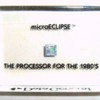@Panhandle Bob - Keep doin' what'cha doin'. Sometimes try something outside your comfort zone and learn from the experience. We all learned from Mike Pickett, then learned a little more from Danny and are about to learn even more from looking over Stan's shoulder. Not everyone will be converting to EFI. Heck, I don't know of many that put a gas heater in after me, but the info is on here for that, and a whole lot of lesser mods that people can try, and THAT is what I like to see pushing this group forward. And we're all good at it.
El Frazzled wrote: "I'm not sure that shop still exists, as the technology now that is used to replace all those manual connections is thin film photolithography and very large scale integration. Machines make the PCBs and the VLSI chips get plugged in and Bob's your uncle."
Sounds like you're waxing for the "Good Old Days there, @El Frazoo.
Yeah, those shops still exist, but these days, what you think of as a prototype shop would be something like the Robotics labs in high schools and colleges, working with "smarter" sub-assemblies that do more all the time. Their CPU typically sits on a card about 3" X 5" and talks to a bunch of other things via standard bus languages. Most of what it needs is on the same card. Tell the cpu to do something and based on results send a signal out a particular bus to do something outside of the CPU. Remember when everyone was excited when BIOS was made a PC "standard"? Then anyone could write and operating system/compiler for it to do neat stuff! How about SCSI I/O? You could make different things talk to each other! Or maybe Industry Standard Architecture (ISA) for the 286/386 PC chips that defined how to connect other things to the CPU? (which we still use, today) WOW! Now it was super-easy to talk between different devices! The list goes on and is very long.
In the automotive world, it's people like Danny P, Mr. Pickett and Stan G taking the bull by the horns, researching what others have done on on-line forums (like this one), gathering the right parts, wiring it all up and applying the right software. This is no different than Ham Radio operators building their own heterodyne receivers in the 1950's and 60's, Electronic Geeks building TRS-80 and Commodore computers and peripherals in the 1970's and so on. Nothing much has changed - Things just got smaller and do a lot more.
Computer Aided Design has made designing stuff a lot easier and if it is a mechanical part then the CAD files can be used to make mechanical parts, either with CNC machines (Computer Numerical Control) or 3D printing, which is precise and easily changed. Electronic VLSI is designed similarly, but gets tested in simulators (there are software people who specialize in writing simulators - They're usually kind-of weird) until the chip works properly in Sim and then a file is sent to the chip foundry to make the VLSI in silicon. Both processes have similarities.
So a lot has changed at the Micro level where things got smaller and do more, while not a lot has changed at the Macro level where you integrate whole functioning sub-assemblies over standard communication protocols. Engineering geeks of all ages are still building pretty neat stuff, but their tools and building blocks have gotten a whole lot better. My grandsons are building robots I couldn't have dreamed of.
Considering that most new cars since 1985 have come with an ECU and fuel injection, the only market for conversions is the collector car market (Us) and there is enough diversity in engines to make something off-the-shelf for a plug-and-play solution not economically practical. Numbers tell the story: There are enough 'Murican V8 Hot Rods out there that outfits like Holly and Edelbrock can make bolt-on EFI for them that is cost effective. But there's not enough 2-liter aircooled VW's out there for suppliers to get excited about making an EFI kit for us. Or rather, there are a handful, but the cost is really up there and they may not be ideal. Mike and Danny have given us parts lists and offers of help. The rest is up to us.
So you get enterprising guys like the three up above who say "Screw it - I'm gonna figure this out and do it!" More power to them -
Somebody needs to lead the charge. 
@Michael Pickett - See what you've started? 😉































